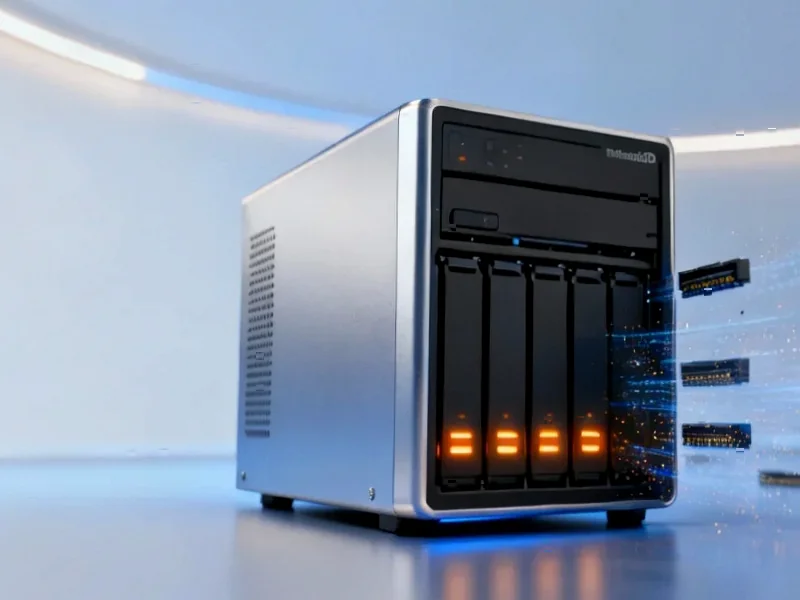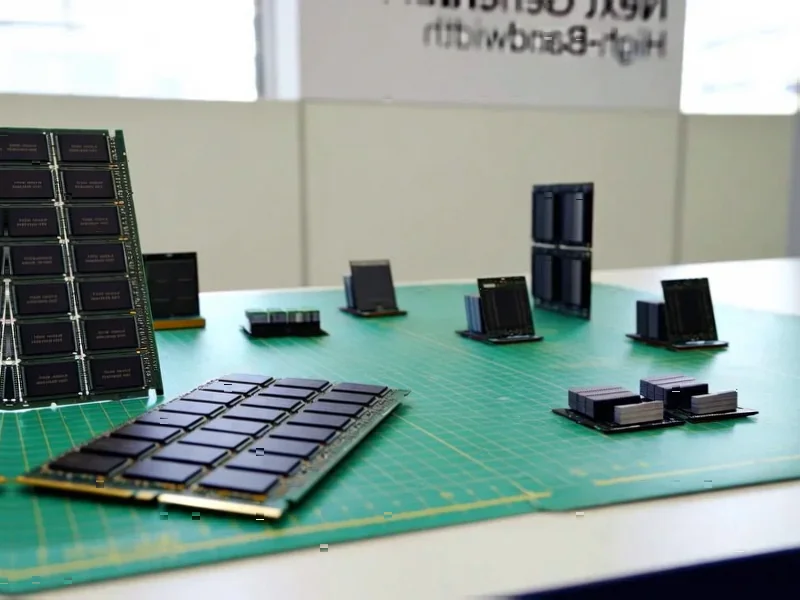According to XDA-Developers, a home lab enthusiast discovered that adding a $35 dual-port NIC to their Windows 11 desktop provided better network performance than upgrading their HP ProDesk 600 G6 mini PC server. The setup involved connecting one 2.5 GbE port to the router and another directly to the mini PC, creating a dedicated 1 GbE link that eliminated router-related interruptions. This configuration allowed the desktop to act as a control tower for managing VLANs through OPNsense VM on Proxmox while keeping the mini PC lightweight and focused on running VMs and Docker containers. The approach solved stability issues with backups, Docker containers, and media streaming that previously suffered from consumer-grade router limitations. This unconventional strategy demonstrates that sometimes the most effective upgrades aren’t where you’d expect.
The Desktop-Centric Home Lab Architecture
This approach challenges conventional wisdom that servers should always receive network upgrades first. In reality, many home lab users spend more time interacting with their primary desktop than directly with server hardware. When your desktop becomes the central management point for multiple services, containers, and virtual machines, its network capabilities directly impact your entire workflow efficiency. The strategy of making the most-used machine the network hub creates a more responsive management experience, especially when troubleshooting requires immediate access to multiple services simultaneously. This architecture particularly benefits users who manage their infrastructure through web interfaces and remote desktop sessions rather than direct command-line access.
Budget-Conscious Network Optimization
The $35 investment highlights how strategic upgrades can deliver disproportionate value compared to more expensive alternatives. While enterprise-grade Intel or Mellanox NICs might offer superior performance, Realtek-based solutions provide adequate functionality for most home lab scenarios at a fraction of the cost. The physical constraints mentioned—particularly the limited PCIe x1 slot availability—demonstrate how real-world hardware limitations often dictate upgrade paths more than theoretical performance metrics. For users with older hardware or compact systems, finding compatible upgrades for small form factor servers can be challenging and expensive, making desktop upgrades the more practical solution. This approach aligns with the homelab community’s emphasis on working within constraints rather than pursuing ideal but unaffordable solutions.
Practical Network Segmentation Benefits
The VLAN implementation described provides crucial security and organizational benefits that many home lab users overlook. By isolating IoT devices and lab networks from primary internet-facing devices, this setup reduces attack surfaces and contains potential security breaches. The use of OPNsense for VLAN management demonstrates how professional-grade network security tools can be implemented in home environments without requiring expensive hardware. This segmentation strategy becomes increasingly important as homes accumulate more connected devices, each representing potential vulnerabilities. The ability to maintain local network functionality during internet outages is another underappreciated benefit that ensures continuous access to self-hosted services and media libraries.
Performance Versus Stability Trade-offs
This case study emphasizes stability over raw speed—a crucial consideration often missed in technology discussions. While 10GbE networking generates excitement in homelab communities, consistent 1GbE or 2.5GbE performance often provides better user experience than intermittent higher speeds. The mentioned issues with SMB multichannel instability and failed backups highlight how reliability concerns can outweigh theoretical performance advantages. For most home use cases including media streaming, file transfers, and application hosting, stable gigabit-speed connections sufficiently meet requirements without introducing complexity that compromises reliability. This pragmatic approach recognizes that network hiccups disrupt productivity more significantly than slightly slower transfer speeds.
Strategic Future Upgrade Path
The desktop-first upgrade strategy creates a flexible foundation for future expansion. By establishing the desktop as the network control point, subsequent server upgrades can focus on computational resources rather than network interfaces. This approach also simplifies migration to more powerful server hardware later, since the network architecture remains centered on the user’s primary workstation. The direct connection between desktop and server creates a reliable management channel that persists regardless of broader network changes or router upgrades. This methodology aligns with enterprise best practices where out-of-band management networks provide dedicated access to infrastructure, ensuring administrators can always reach critical systems even during network incidents.
Broader Homelab Implications
This approach has significant implications for how we think about Proxmox and container management in home environments. By keeping the server focused on its core functions and handling network management through the desktop, users can achieve enterprise-like separation of concerns without enterprise-level complexity. The strategy particularly benefits users who need reliable access to self-hosted applications for work or family use, where downtime has real consequences. This desktop-centric model also makes homelab technology more accessible to users who may be intimidated by traditional server management but are comfortable with Windows environment administration. The approach demonstrates that effective homelab design doesn’t require abandoning familiar tools and workflows.




